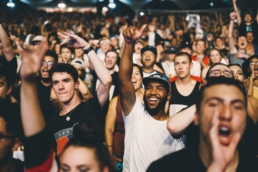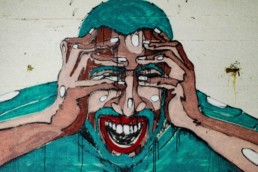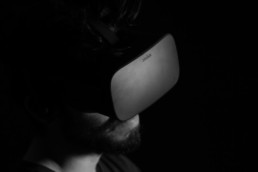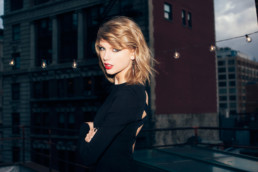There aren’t many ads that give me warm fuzzies. But the new clip from New Zealand bread company Vogel’s managed to sock it to my heartstrings.
If you haven’t seen the video yet, you can watch it below.
In short, eight strangers gather around a breakfast table and the host holds up plates with things like, “Stood between a harpoon and a whale”, “Speaks fluent Te Reo”, and “Raised three daughters alone” written on them.
The guests have to guess which plate corresponds to which person.
The results are usually surprising. And the corresponding stories are heartwarming.
The ad would work as a standalone piece of content that unites New Zealanders (it probably also helps that the background music is a Kiwi classic by Chris Knox).
It just happens to be an ad for Vogel’s bread.
There has been a clear shift towards brands creating ads that transcend traditional marketing and reach through the noise of social media (and television in this case) to make deeper connections with their audience.
The most successful example in recent memory is the Heineken #OpenYourWorld video, which has more than 13 million views on Youtube.
Ads like this don’t feel like advertising. They are stories about real people (as far as we know). And they touch on relevant issues in tasteful ways.
It’s more explicit than content marketing, but it’s much more subtle than traditional advertising.
With 30,000 views on Youtube in a week, mainstream media coverage and widespread positive feedback on social media, the new Vogel’s clip has achieved what most companies can only dream of.
Why did the Vogel’s ad work?
It doesn’t feel like an ad
Now I’m a bit of a sceptic, so I had my guard up when I saw the ad for the first time. Initially, it felt a bit staged.
We’ve seen this before. So-called strangers meet for the first time with cameras rolling. Yeah, sure.
But as soon as the people started sharing their stories, I was sucked into the realness of it.
Convincing someone that a perfectly-cut (and probably rehearsed) ad is real is not an easy thing to do.
But this is what’s needed to cut through the noise of social media and bypass ad-blockers these days.
Ads can’t feel like ads anymore. You’ve got to keep it real.
It tells a compelling story
The whole ad was based around the personal stories of eight strangers.
People love stories, particularly when they’re personal. Even more so when they’re not the usual stories you might hear around a breakfast table.
The stories are inspiring and very Kiwi. They pluck at our heartstrings and strike at our national pride.
They reinforce what we believe about New Zealand. That we’re brave, passionate, caring, committed and diverse.
Stuff columnist Greey Berry wrote: “This bloody advert melted my heart faster than a knob of butter on a freshly toasted slice of Vogel’s.”
Massey University distinguished professor and sociologist Paul Spoonley said the ad showcases “the bigger story of New Zealand” that contributes to an “underlying issue in society rather than just focussing solely on its product”.
High praise, indeed.
Ultimately, the underlying story being told here is that Vogel’s is New Zealand’s bread.
It doesn’t say that explicitly, but by associating Vogel’s with these grassroots Kiwi stories we make that connection subliminally.
This is the subtlety of brand storytelling. By using real people and real stories (albeit in a staged setting in this case) Vogel’s succeeds in reinforcing its own story.
It challenges stereotypes
It’s becoming more important for brands to have a social conscience. This was demonstrated in the Heineken ad above.
Advertising is now an opportunity for brands to have a voice and challenge the status quo.
Professor Spoonely said the result is a powerful tool for enhancing positive attitudes in society.
It’s new territory for brands and can be fraught with difficulty. When it’s not done right, ads can fall flat on their face.
Challenging stereotypes also adds the element of surprise.
In this case, Vogel’s exposed stereotypes in a tasteful and positive way.
In the Vogel’s ad, the first plate that comes up is, “Can name every All Black since 1987”.
An older, Kenyan-born man claims the plate and the people around the table gasp. It was unexpected.
By challenging stereotypes, brands can also help to promote diversity and inclusiveness.
It celebrates our differences as well as the things that unite us as New Zealanders.
Any story that can do that successfully is going to resonate with people.
Vogel’s is invisible
This is becoming more common in modern ads. The brand is mostly invisible.
There are a few quick shots where you can see a loaf of Vogel’s on the table, but it’s not until the very end of the three-minute clip that a narrator announces, “Vogel’s, 50 years of Kiwis bringing something special to the table.”
I think this ad could have worked just as well without the cheesy tagline at the end, particularly on social media.
Simply the fact that the video was shared via Vogel’s social channels, and therefore explicitly linked to the brand, would have been enough for people to make the connection.
It would have achieved the goal of building brand equity (the value derived from consumer perception) and would have been more native to the social environment in which it’s being shared.
But who am I to argue with 800,000 views, 4500 shares, 10,000 likes and 900 comments?
I’m sure Vogel’s marketing team have been getting high fives all round since the video dropped.
You might also enjoy reading...


















